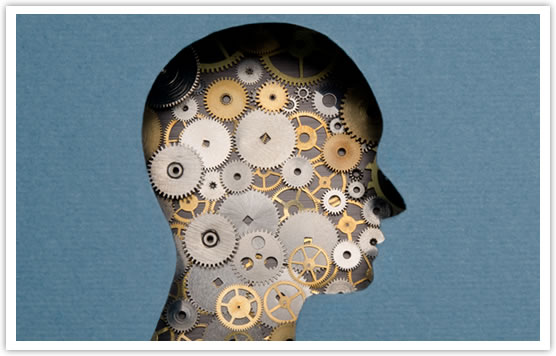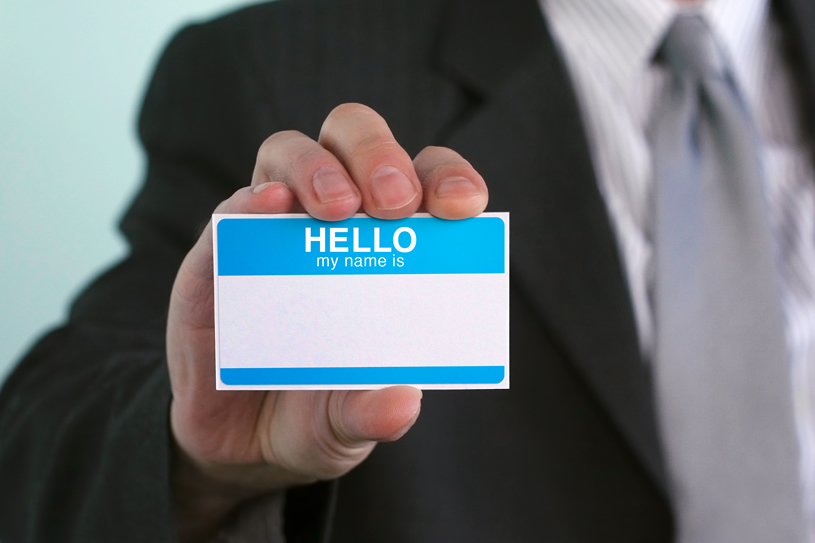First impressions are just that. There is no second chance. Remembering names and an even greater volume of information allows someone to stand out in today’s highly competitive workplace and global marketplace. There are accelerated learning strategies that, when applied consistently, will make the difference.
Retention of names is something many of us have said, at one time or another, we would like to master. This can be achieved as an experiential learning process. “Experiential” is being able to relate to or experience the result of an experience, which accelerates adult learning. Much of what this post introduces is credited to the work of David Kolb, credited as the father of modern experiential learning.
Making this process fun and meaningful makes all the difference in the world. Consider the power remembering someone’s name can have. How do you feel when a person you barely know remembers your name? Most of us are initially caught off guard. Then, after the smoke clears, we are often impressed and are left with an impression that this person cares. Psychologically, we are connecting the dots and may tend to make them mean we left an impression on him/her – “This person cares because they remember me.”
A few years ago I was consulting Avis Budget Group on a project. There is a greeter in San Jose that literally remembers everyone he greets. He has been there over 5 years and people return in awe of this gift and commitment he has. He remembers your name and something about your work. Wow! Is this a gift or skill that can be developed?
 Here are a few proven tips that can help you improve your ability to remember names. Try them out. Let me know how they work out for you.
Here are a few proven tips that can help you improve your ability to remember names. Try them out. Let me know how they work out for you.
- Commit to Learning: Making a deep commitment to learning and retaining this information is where it begins. You are creating a new habit, and this begins with commitment and consistent effort. Making an emotional commitment to learning will send a message to your brain. You have got to care and understand the impact. This is a deliberate choice and effort on your part to be observant and honor people by remembering them and allowing them to leave an impression.
This process is similar to the myth that says adults have a more difficult time learning a new language. If you tell yourself you are bad with names… then you are correct.
- Positive First Greet and Repeat and Repeat: Greet the person, using their name and observing their facial features. Use their name in conversation repeatedly but within reason where it makes sense. Use their name in the farewell while observing unique facial features that are most prominent. What people say is true: if you don’t use it, you lose it.
Observe something about them, ask a question about one of the following ideal conversation starters. They will provide you valuable information and a free flowing conversation with plenty of natural opportunities to repeat their name and set a positive first impression. These conversation starters include: family, sports, hobbies, vacation, school/college, birthplace, and pets. These are conversations that can go deep and remain upbeat, allowing the person to share openly about themselves. Most importantly, they show you care. Listen!
Keep the conversation positive. Avoid questions about sex, religion, politics and work. You do not want them to associate you and your name and/or face with something negative.
- See, Speak, Touch: It is important to leverage multiple learning styles to stimulate retention. Apply each of Kolb’s learning styles–Visual, Auditory, Kinesthetic (VAK) to retain information.
Spelling the name verbally can support retention from an auditory and retention level. Next, seek to find their name on other postings in the area, such as an event program, name badge, business card, etc. This will help visual level. Entering them into your contact database soon after meeting them will help on a kinesthetic and tactile level. When doing so, include any physical descriptors and interests to trigger your recall at a later date. Of course, a selfie photo with you and them can be helpful as well. Ideally, this photo accurately depicts the environment or function where you met.
- Play the Association Game: Identify visual images you can associate with the person’s name. Then create a story to tie those images together. Choose to make this a fun game. The “edutainment” value will help you commit because you are having fun and it does not seem like a monotonous task.
I have found that the more outrageous associations, the better. Associate them with someone you consider famous or memorable in your life that either has the same or rhyming name and/or looks similar to them.
Here is an example, working with the name of a colleague, Todd Bouldin. He is an attorney and quite accomplished as a speaker. I think of the character Todd Tomorrow, Francine’s dreamy boyfriend in John Waters movie “Polyester”. Todd is a “bold” man with a strong stature and radiates confidence. Putting this all together, I recall his name because Todd is forward thinking (Todd Tomorrow) and with a “bold” charisma, states his case “in” all matters with passion (Bouldin).
 Retention of High Volumes
Retention of High Volumes
This process can be used to recall more than names, obviously. If seeking to retain volumes of information, the process is similar. Consider this summary of tools I use when preparing to facilitate a new program.
- Focus: It takes about eight seconds to encode a message to memory. Avoid distractions than can impact how it is decoded by the receiver.
- Chunk it down: I have found breaking information into small chunks and making these chunks logically flow to tell a story make it easier to remember and share later.
- Frame of reference: Make the data tell a story as cited in the last bullet. Take it a step further; connect it with what you already know from research or prior conversations.
- Use brain triggers: We refer to these as mnemonics (nəˈmäniks) which are a variety of brain triggers that stimulate recall. These can be letter patterns, ideas, or associations that support retention.
- Multi-sensory engagement: Physically engage the senses. If this is not possible, use descriptors that paint a picture and engage the 5 senses (taste, touch, sight, smell and hearing). I have found reading my notes aloud helps my recall when facilitating a program. The brain can also recall based upon patterns in the rhythm of the delivery and flow of the message.
- Make it your own: Avoid rather than memorize random facts. Rather, share or explain the concepts to a friend or colleague you trust by using your own words. Talk out concepts shortly after you learned them. Talking them out forces you to answer questions and make it your own.
- Practice in a mirror: Do not wait until the last minute. Give yourself time to rehearse. Rehearse as you get fresh information.
Conclusion
Remembering people’s names of even greater volumes of information begins with personal commitment and the messages we send to our brain. The reward and emotional connection to the impact of using this knowledge is essential. What is the WIIFM? (What is in it for me?)
Then practice, practice, practice.
ADDITIONAL RESOURCES:
Learning Styles Self-Assessment:
http://www.businessballs.com/freepdfmaterials/vak_learning_styles_questionnaire.pdf
Video: How to Remember People’s Names:
Video: How to Handle Forgetting Someone’s Name:
REFERENCES:
http://thinksimplenow.com/productivity/7-hacks-to-remember-any-name/
http://www.nwlink.com/~donclark/hrd/styles/kolb.html
http://masterofmemory.com/names/



